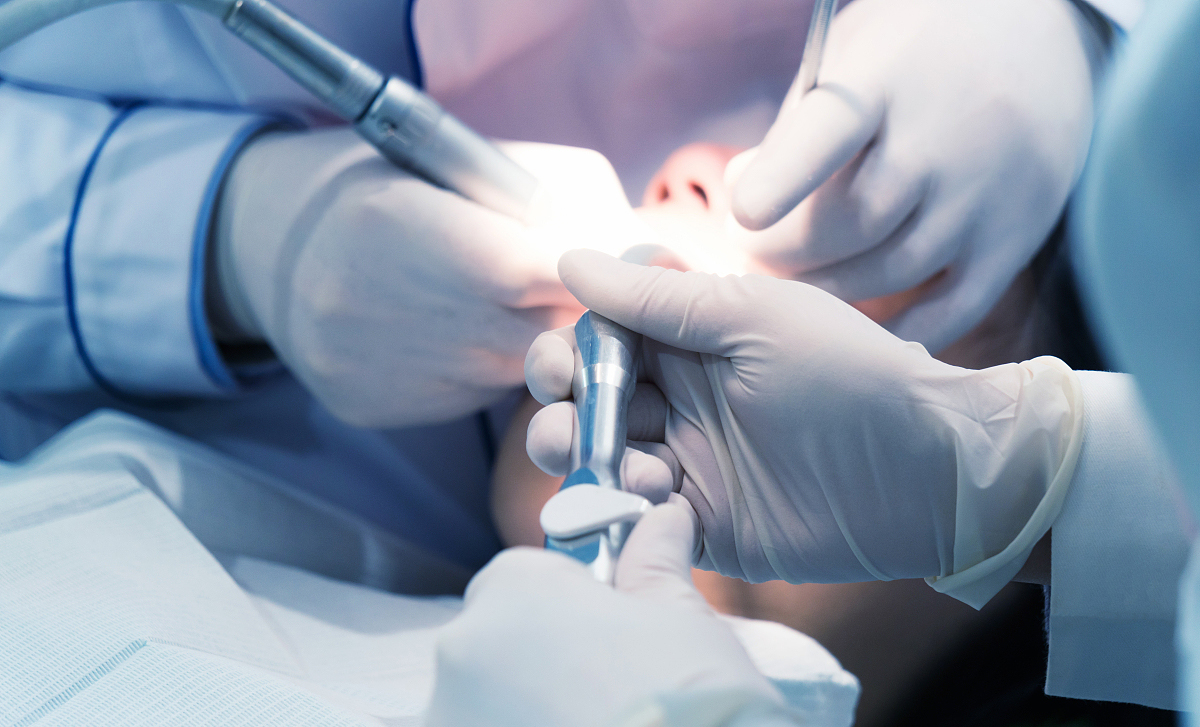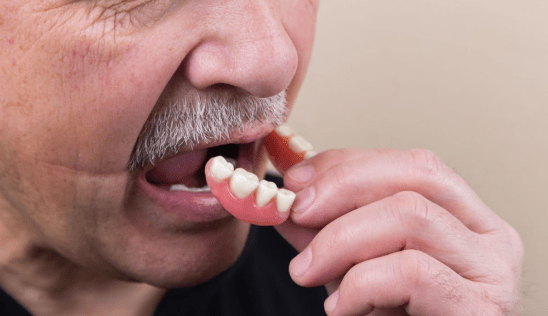 Open wechat
Open wechat
The pain caused by wearing the denture is due to the denture pressing the tissue, resulting in mucosal swelling, rupture and tenderness.

Local problems of the tissue surface
On the alveolar ridge, there are the bone tip and bone edge; the buccal side of the maxillary tuberosity and the maxillary tuberosity; the bony bulge of the mandible; the area of the hyoid crest covers the thin mucosa, which is easy to cause tissue compression after force, when the edge of the denture is worn or removed. Because the impression pressure is uneven or the model is damaged, the tissue can often be scratched.
Treatment: in grinding or crushed mucosa coated gentian purple, denture tissue surface dry, wear entrance, in the crushed parts of the corresponding base tissue surface display purple color, with peach or wheel stone will purple color base tissue surface grinding a little, make the appropriate gap between base tissue surface and tissue, this treatment is called buffer treatment. The pressure indicator paste can also be used to check the site of the tissue pressure and buffer it.
Base stock edge
Stretch too long or the edge is too sharp, the band part base buffer is not enough, in the migration wrinkle, band part can cause soft tissue swelling, rupture or tissue cut injury, serious mucosa is gray.
Treatment: when the posterior margin of the maxillary denture is too long, and the distal lingual margin of the mandibular denture is too long, the symptoms of sore throat or pain can often occur when swallowing. In the clinical examination is easy to find, only too long, too sharp edge grinding short and round blunt, the symptoms can be reduced, but should not be removed too much, so as not to destroy the edge closure.
occlusion
The denture has early contact or interference in the median occlusion and side, and the tooth force is not evenly distributed on the top of the alveolar ridge or the oblique side of the ridge. Such as on the top of the crest, it is caused by the early contact with the tooth pressure. As on the side of the ridge, it is due to the interference of the tooth tip during the lateral movement, sometimes far away from the stimulus. For example, in the median jaw, the second molar has early contact, making the mandible denture slip forward, and making the lingual mucosa of the alveolar ridge of the anterior jaw rupture, which is often mistaken for the long edge of the lingual base. If the edge is worn short, but the symptoms still exist, we must pay attention to the examination and analysis of the problem.
Treatment: check, the lower denture worn in the patient's mouth, the doctor with the right hand thumb and finger or hand index finger on denture cheek base, the mandible denture fixed on the mandible alveolar ridge, then let the patient jaw back, in the middle position closed, in the patient's upper and lower teeth have contact, then bite, such as the doctor found the denture or jaw has sliding or twist, said occlusion has early contact point, must find out the early contact point, give grinding to achieve dental balance. The median jaw wax record can also be removed in the mouth, and the upper and lower jaw denture will be fixed on the jaw frame for selective grinding and jaw adjustment.
The denture is unstable
When the denture functions, the denture is unstable, resulting in the formation of many tenderness points and rupture in the mouth. The reasons of instability are that the edge of the denture is extended too long, the position of the teeth is not correct, the relationship between the jaw position is not correct or the interference of the tooth tip on the side.
When the patient's denture has a retention force, while the denture shifts when speaking, indicating that the denture is unstable. The forces that cause denture instability are:
1. The median relationship is incorrect, and there are early contact points, especially between the second molars.
2. The position of the artificial teeth is not correct, the position of the maxillary denture is warped, the arrangement of the posterior teeth is too close to the tongue and affect the activity of the tongue, the mandibular tooth plane is too high, affect the tongue to send food to the jaw and cause the denture dislocation.
3, on the side, there is interference between the teeth.
4, in the alveolar ridge on the continuous tenderness point, the pain is not obvious, should be considered as the error of the jaw relationship, most of the case is due to the median relationship is incorrect, or early contact with teeth caused by jaw interference.
When analyzing the causes of pain, a careful differential diagnosis is required. Determine whether the pain is caused by local compression on the denture base tissue surface or friction over the denture movement caused by occlusal factors. Identification method In addition to the ability to observe the movement of the denture with the naked eye, hold the denture with the finger, feel whether the sliding and twisting of the occlusal denture, but also to check the pressure indicator paste.
The specific method is: blow dry the denture tissue surface, apply a little pressure to paste the corresponding denture tissue surface in the pain area, and then put the denture into the population, and the finger pressure to put it in place. Take out after a moment, observe whether there is a pressure indicating trace of extrusions. If there is an extruded trace and corresponding to the pain site, it indicates that the pain is caused by local compression. Peach stone needle can be used to buffer the part, blow dry, and then apply a little pressure indicator paste, put in the population, repeated the above process, until there is no trace of extrusion.
If when the pressure indicator confused in the tissue surface, wear the entrance, finger pressure makes it in place, after removal, no pressure indicator paste out traces, can be again into the mouth, told the patient to bite, and then remove the denture, the part of the pressure indicator paste out traces, that the pain is caused by tiny denture after the bite. Need to grinding jaw selection, not with the local slow method. Differential diagnosis and treatment with this method can often receive immediate results.
Vertical distance is too high
After wearing the denture, the patient felt pain or tenderness in the alveolar ridge, and could not wear the denture for a long time, aching the cheek muscles and burning in the upper palate. Check the oral mucosa without abnormal manifestations, which is mostly due to the high vertical distance of the jaw or night molar teeth.
Repair method: when the current tooth is not large, the vertical distance can be reduced when arranging the posterior teeth, or the complete denture can be made again.

